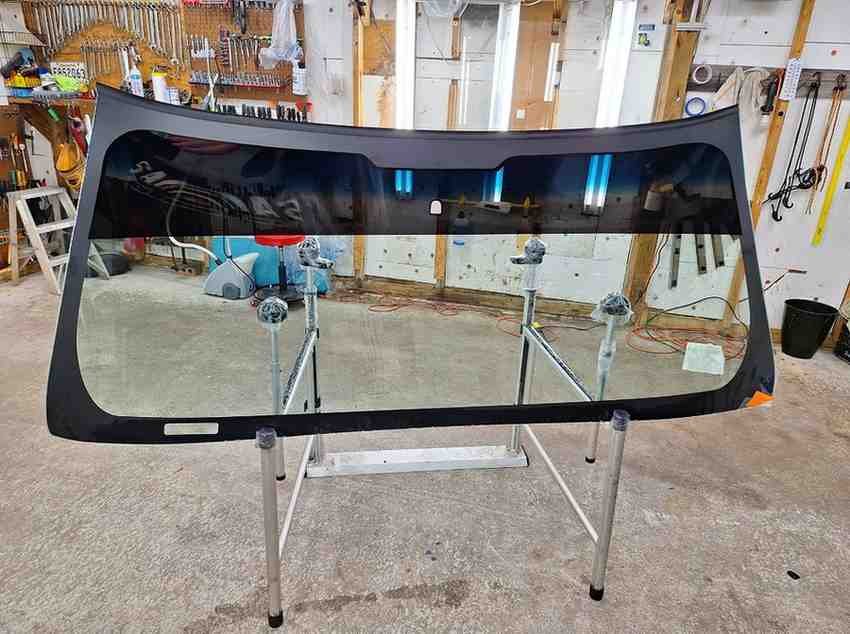DIY Auto Glass Care: Best Practices for Maintenance
Maintaining the glass on your vehicle is not just about keeping it looking pristine—it's crucial for safety and visibility while driving. Auto glass, including windshields, rear windows, and side windows, is subject to daily wear and tear from environmental factors, road debris, and the natural aging of materials. This blog post will guide you through the best practices for DIY auto glass care, helping you ensure that your car's glass remains clear and intact for the long haul.
Auto glass is made to be tough, but it’s not indestructible. It includes several types:
Laminated glass: Used mainly for windshields, laminated glass consists of two glass layers with a plastic film between them. This construction helps the windshield stay intact even when broken, preventing shards from causing injury.
Tempered glass: Used for side and rear windows, tempered glass is treated to increase its strength and, upon impact, shatters into small, blunt pieces that are less likely to cause injury than regular glass.
Get In Touch
Each type requires specific maintenance strategies to maximize lifespan and effectiveness. Understand the environmental impact of these auto glass repairs.
Regular Cleaning: The First Step in Auto Glass Care
Regular cleaning is the simplest yet most effective way to maintain your auto glass. Here’s how to do it right:
Choose the Right Cleaning Agents: Always use a cleaner specifically designed for auto glass. Household glass cleaners often contain ammonia, which can degrade the tinting and coatings on auto glass. Automotive glass cleaner, on the other hand, is formulated to be safe for these materials.
Use Microfiber Towels: Microfiber towels are gentle on glass and don’t leave lint or streaks behind. Avoid paper towels or coarse fabrics that can scratch the glass.
Technique Matters: When cleaning, spray the cleaner onto the towel rather than directly on the glass. This prevents the cleaner from dripping into the window’s edges where it can damage seals and tinting. Wipe in a circular motion to lift and remove dirt and grease effectively.
Dealing with Minor Scratches
Minor scratches can often be treated at home without the need for professional help. Here’s how to address them:
Assess the Scratch: Determine if the scratch is deep enough to catch your fingernail. If not, it’s likely it can be treated with a DIY approach.
Glass Polishing Kits: Auto parts stores sell glass polishing kits that can be used to buff out small scratches. These kits usually contain a polishing compound and a buffing pad. Follow the kit instructions carefully.
DIY Tip: A small amount of toothpaste (the plain white type) can be used as a polishing compound in a pinch. Apply a small amount to a microfiber cloth and gently polish the scratch in a circular motion.
Preventing Chips and Cracks
Chips and cracks not only look bad, but they can also compromise the structural integrity of your auto glass, particularly your windshield. Here’s how to prevent them:
Drive Prudently: Maintain a safe distance from the vehicle in front of you, especially on highways. This reduces the chance of flying debris hitting your glass.
Avoid Construction Zones: If possible, take routes that avoid road work, as these areas are more likely to have loose stones and debris.
Park Smart: Whenever possible, park in shaded areas to minimize temperature fluctuations that can stress the glass. Also, avoid parking under trees where falling branches or sap can cause damage.

Addressing Temperature Stress
Temperature changes can cause your auto glass to expand and contract, which over time can lead to weakness and cracks. To manage this:
Use Climate Control Wisely: Gradually heat or cool your vehicle. Sudden changes in temperature can stress the glass.
Sunshades: Use sunshades to minimize direct sunlight on your windshield when parked in hot weather. This helps keep the temperature of your glass more consistent.
When to Seek Professional Help
While many maintenance and minor repair tasks can be handled at home, some situations require professional attention:
Large Cracks and Deep Chips: These can compromise the safety of your vehicle, particularly if they are in the driver’s line of sight. Learn more about windshield repair vs. replacement to decide the best course of action.
Installation Errors: If your windshield has been replaced recently and you notice issues like leaks or noise at high speeds, professional recalibration or reinstallation may be necessary.
Taking care of your vehicle’s glass is crucial for maintaining visibility and safety on the road. By following these best practices, you can keep your auto glass in top condition and avoid the costs and hassle associated with auto glass repairs and replacements. Remember, when in doubt, consulting with a professional is always a safe bet to ensure the longevity and effectiveness of your auto glass.
Huntington Beach Mobile Auto Glass
Website: https://www.huntingtonbeachmobileautoglass.com/
Phone No: (714) 406-2771
Address: 6700 Warner Ave #2a, Huntington Beach, CA 92647
Working Hours: Monday to Sunday 7 AM - 9 PM